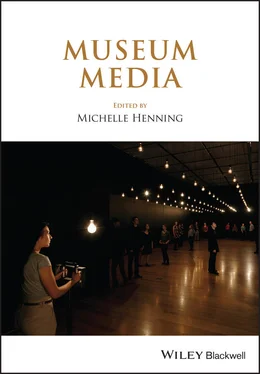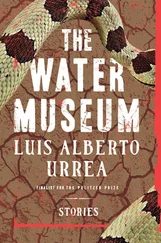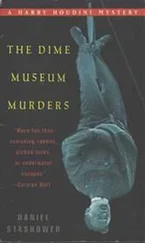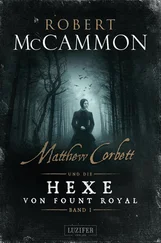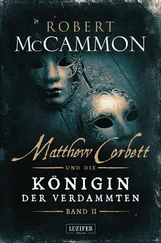Museum Media
Здесь есть возможность читать онлайн «Museum Media» — ознакомительный отрывок электронной книги совершенно бесплатно, а после прочтения отрывка купить полную версию. В некоторых случаях можно слушать аудио, скачать через торрент в формате fb2 и присутствует краткое содержание. Жанр: unrecognised, на английском языке. Описание произведения, (предисловие) а так же отзывы посетителей доступны на портале библиотеки ЛибКат.
- Название:Museum Media
- Автор:
- Жанр:
- Год:неизвестен
- ISBN:нет данных
- Рейтинг книги:4 / 5. Голосов: 1
-
Избранное:Добавить в избранное
- Отзывы:
-
Ваша оценка:
- 80
- 1
- 2
- 3
- 4
- 5
Museum Media: краткое содержание, описание и аннотация
Предлагаем к чтению аннотацию, описание, краткое содержание или предисловие (зависит от того, что написал сам автор книги «Museum Media»). Если вы не нашли необходимую информацию о книге — напишите в комментариях, мы постараемся отыскать её.
Museum Media — читать онлайн ознакомительный отрывок
Ниже представлен текст книги, разбитый по страницам. Система сохранения места последней прочитанной страницы, позволяет с удобством читать онлайн бесплатно книгу «Museum Media», без необходимости каждый раз заново искать на чём Вы остановились. Поставьте закладку, и сможете в любой момент перейти на страницу, на которой закончили чтение.
Интервал:
Закладка:
In another video the American soldier La Verne Keats relates that, when he first heard about Dachau, he could hardly believe “that a people like the Germans with all of their education, would permit something like this to happen.” In order to understand, he and his fellow soldiers started questioning the prisoners. He concludes his testimony with the sentence: “I could hardly sympathize with the German soldiers anymore because with their fighting they had supported this regime.” La Verne Keats’s testimony corrects the image of the clean Wehrmacht which has for a long time been prominent in Germany. This image was finally challenged in the 1990s by the exhibition Vernichungskrieg: Verbrechen der Wehrmacht 1941–1944 (War of annihilation: Crimes of the Wehrmacht 1941–1944). The exhibition toured 33 German and Austrian cities between 1995 and 1999 and can be seen as a turning point in German memorial culture. The exhibition, which documented crimes committed by ordinary Wehrmacht soldiers, shattered the ideas that many Germans had about their fathers and grandfathers. It met with protests and vandalism from right-wing extremists and became a subject of political debate in every city where it was shown. In 1999 the exhibition eventually had to close down, because of criticism relating to an incorrect attribution of photographs. A revised version opened again in 2001 under the title Verbrechen der Wehrmacht: Dimensionen des Vernichtungskrieges 1941–1944 (Crimes of the Wehrmacht: Dimensions of the war of annihilation 1941–1944; see Williams 2007, 59; Musial 2011). La Verne Keats’s testimony can be seen as an extension to, and final word on, the debate on the exhibition: he accuses not only those soldiers who actively took part in the crimes, but all soldiers who, in their fighting, all supported a criminal regime.
In a video testimony on the construction of the Berlin Wall, Dorothee Wilms defends then chancellor Konrad Adenauer’s much criticized decision not to travel to Berlin. She observes that she understands Adenauer’s decision, that he could not have done much, that Berlin was still occupied territory, and that this was a question that had to be resolved by the four victorious powers. Moreover, the situation was so heated that a war seemed imminent. Visitors are, therefore, not only given the information that Hitler committed suicide, that the camps were liberated by the Allies, and that Adenauer did not travel to Berlin, but they are also guided in their evaluation of those events.
Second, because they show individuals who can reflect on the past, video testimonies are used to give moral lessons and to transmit norms and values. In the Haus der Geschichte, again, the German writer Wolfgang Held remembers his visit to Buchenwald concentration camp as a 15-year-old boy. He remembers seeing masses of bodies and fleeing terrified from a barrack where he found people lying on pallets, like corpses, only their eyes revealing that they were alive. When he was standing there, crying, a survivor tapped him on the shoulder and said: “Junge, mit Heulen, das ist zu wenig” (Boy – sniveling is not enough). Everything that he has written since emanates from this sentence, he says. Held’s testimony both instructs (German) visitors that nothing can redeem the major crimes of the past and, at the same time, invites them to become active citizens – like Held himself who today acts not only as a writer but also as a kind of professional witness to history.
In a video testimony on European integration, the curators try to transmit some form of European conscience or European identity to their (German) visitors. Here, Hans-Gert Pöttering, former president of the European Parliament reflects on the opening of borders:
In the past, borders were something that divided and when borders were trespassed it was soldiers who trespassed those borders and the outcome were misery, poverty, death. It was war. And today border controls are abolished. ... It is something wonderful, historically new. And today Czechs and Poles are welcome here and we are welcome in Poland. And this links us Europeans together and this makes us also stronger in a sense. That we are a community of values.
Incidentally, the exhibition does not mention the fact that Germany opted to restrict Polish citizens’ access to the German labor market for the maximum period of seven years after Poland joined the European Union. Dorotee Wilms again observes that some things might not please everyone, but that European integration is a historical stroke of luck for Germany. The former German minister Hans-Jochen Vogel advances the eternally repeated argument that young people, used to a united Europe, might take peace for granted, but that for his generation war was the norm. In this way, not only do the witnesses to history serve as history teachers, but the video testimonies are also used to turn the visitors into active members of civil society – and into good Europeans.
Finally, by relating what it felt like to go through certain experiences, video testimonies are used to educate the visitors emotionally. The extracts selected for the exhibitions are not only the most interesting, but often also the most touching. Thus, Lothar Wesner, the mason who helped to build the Berlin Wall, remembers being disturbed and thinking that he was now contributing to something that would prevent him from seeing his family. When he went home at night he would be so distressed that his mother and his wife said to him, “Junge, wie siehst du den aus?!” (Boy, what a sight you are?!). The former minister Rainer Eppelman talks about “wall sickness,” a psychological condition that seemingly befell people who were living close to the wall. He observes that the idea that “you can’t get out of here” must have been traumatic for many people. Visitors are not only made aware of the psychological consequences of historical events, but also invited to empathize with the witnesses to history. The intention may be to make them evaluate the present positively compared to the past. It may also be to prevent them from doing something similar in the future; this is especially the intention in holocaust museums.
The ultimate goal of most museums of contemporary history today is not only to instruct their visitors on the past, but also to turn them into active citizens. Video testimonies are used as a means toward this goal. In the case of Holocaust survivors, the term “secondary witnessing” has been used to describe the transmission of the testimonies from one generation to another in order to make sure that “we never forget” (Baer 2000). In Holocaust museums which do not function only as historical museums but also as memorials to the victims, survivors make up the largest group of the witnesses to history that are presented. Only occasionally can video testimonies with so-called bystanders be found, while perpetrators never appear. The witnesses to history in Holocaust museums are rarely prominent individuals. They are generally presented as ordinary individuals to whom the average visitor can easily relate. In the Haus der Geschichte, where one of the main goals is to turn visitors into active German citizens, another practice can be observed. The museum presents very few video testimonies with what we would call “ordinary citizens.” Most of the witnesses to history here are prominent actors, writers, journalists, and politicians. Those witnesses to history are, because of their status and their proximity to decision centers, particularly authoritative teachers of history and morals. They also serve as role models for visitors, who are invited to become historically interested and politically active citizens.
Conclusion
Video testimonies have thus become the subject of musealization. While they have been collection items for around 35 years, they have recently also been introduced into museum’s permanent exhibitions. This process of the musealization of video testimonies represents an attempt to turn communicative memory into cultural memory. While, in past times, communicative memory has been in natural decay, we are now trying to preserve it for the future. The availability of technology to store communicative memory is not the only factor here. How we choose to use the technology is also significant. The interest in recording the memories of individuals is, as I have shown, a consequence of a change in the perception of the individual as an authoritative carrier of memory, which first became evident at the Eichmann trial. For the purpose of storage, communicative memory is standardized – it is put into the format of the narrative interview. The narrative interview is supposed to lead to a particularly pure narration of individual memory. The methodology of the narrative interview, combined with aesthetic choices highlighting the extra-verbal expressions of memory, leads to a representation of individual memory as existing outside time and space.
Читать дальшеИнтервал:
Закладка:
Похожие книги на «Museum Media»
Представляем Вашему вниманию похожие книги на «Museum Media» списком для выбора. Мы отобрали схожую по названию и смыслу литературу в надежде предоставить читателям больше вариантов отыскать новые, интересные, ещё непрочитанные произведения.
Обсуждение, отзывы о книге «Museum Media» и просто собственные мнения читателей. Оставьте ваши комментарии, напишите, что Вы думаете о произведении, его смысле или главных героях. Укажите что конкретно понравилось, а что нет, и почему Вы так считаете.
